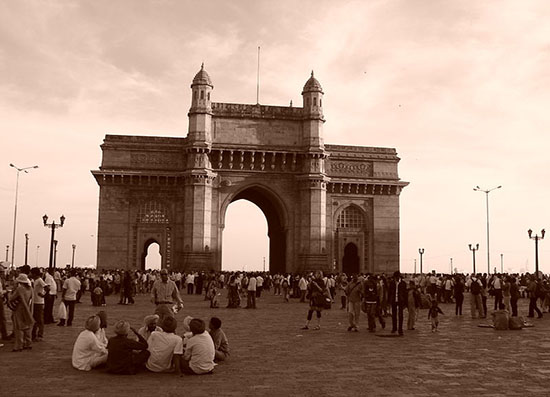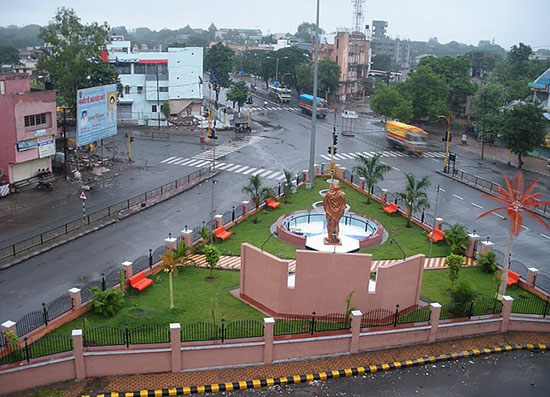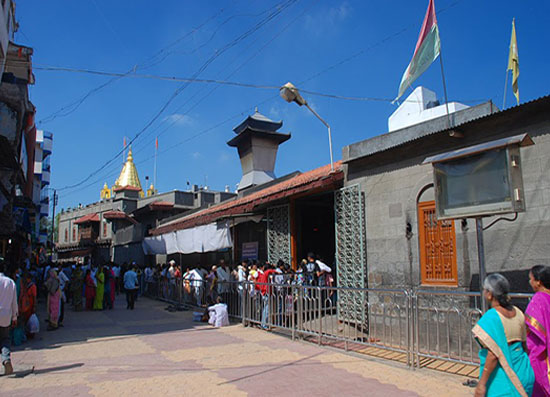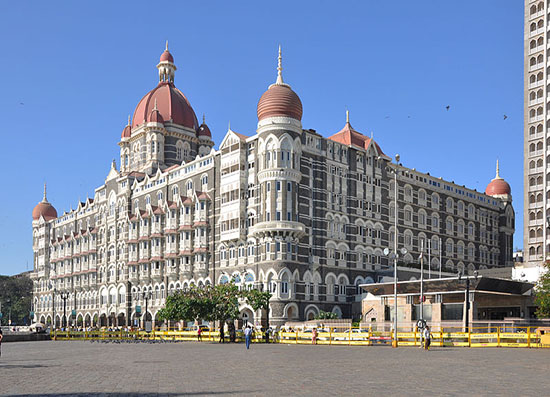Maharashtra Sacred Caves and Adventure Tour
Duration
11 Nights 12 DaysPlaces to visit:
Mumbai - Aurangabad - Ajanta - Ellora - Bhandardara - Mumbai - Murud Janjira - Mumbai-
Day 1 Arrival Mumbai
Meeting and assistance on arrival at Chhatrapati Shivaji International Airport Mumbai and escort you by a private car and transfer to the South Mumbai hotel, whilst the room keys and check-in is organized. You will be briefed about the tour and services. After relaxation if time permit visit Iskcon Temple: dedicated to Lord Krishna, The architectural splendour of the ISKCON Temple is adorned with murals and sculptures. Also visiting the Juhu Chowpatty, nearby to the temple, one of the famous beach of Mumbai at Juhu. Later return to the hotel for overnight stay.
-
Day 2 Mumbai
Today morning after breakfast take a sightseeing tour of Mumbai with a drive to Gateway of India and from here cruise by motorboats to Elephanta Caves. A flight of 100 steps takes you to the top of the hill where it is set. The caves houses large pillars that seem to hold the ceiling, which is made, have crossbeams. The picturesque presentations of the 9 marvelous sculptured panels, set on the walls are awe-inspiring. The most famous of the panels is the Trimurthi, or triple-headed Shiva, where the God is depicted as the destroyer, the preserver and the creator. Later in the afternoon cruise back to Gateway of India, one can have lunch at the hotel or other several good Restaurants like Leopold & Mondegar serving continental cuisines. The sightseeing tour continue visiting Prince of Wales Museum: is a heritage museum comprises of a number of ancient artifacts, Dhobhi Ghat: to see the city's famous open-air laundry in action, Parliament House: The Maharashtra State Assembly, Marine Drive: is one of the most beautifully laid boulevards in the city, Hanging Garden: provide lovely sunset views over the Arabian Sea, Taraporewala Aquarium: There are 100 species of marine and fresh water fish including seven types of coral fish from the Lakshadweep Islands. The large tanks have sharks, octopus, kite fish, and the smaller ones display corals, worms, sea flowers and sea horses. Mani Bhawan: Known also Gandhi Museum, here Gandhi laid the foundation for many independence movements; The three storied building has now converted into a museum in honour of Father of Nation. Later return to the hotel for overnight stay.
Note : Elephanta Caves and Prince of Wales museum are closed on every Monday.
-
Day 3Mumbai - Aurangabad (By Air)
After breakfast check out from the hotel and drive to the airport to board the flight for Aurangabad. On arrival, transfer to the hotel.After relaxation take a sightseeing tour of Aurangabad places of interest: Bibi ka Maqbara Built by Azam Shah in 1678, the Bibi ka Maqbara is a son's loving tribute to his mother, Begum Rabia Durrani: Panchakki - An engineering feat of the time is the Panchakki, or the water mill built by Malik Ambar in 1695. The water, channeled from a spring on a distant hill was used to power the flourmill and grind grain for the pilgrims. Later take an excursion to Daulatabad, ( 16 kms) once known as Devagiri, is a magnificent 12th century fortress standing atop a hill is one of the few invincible forts in Maharashtra. Mohammed Bin Tughluq, the sultan of Delhi gave the name Daulatabad 'The city of fortune'. Series of trick defense and secret escapes routes are the famous features of this fort. Jami Masjid, Bharatmata Mandir, the Chand Minar, Elephant Tank and 'Chini Mahal' or Chinese Palace is the important monuments inside the fort. Khuldabad ("Heavenly Abode"), a walled town near Aurangabad, is the Karbala (holy shrine) of Deccan Muslims. Many historical figures are buried here including Aurangzeb, the last major Mughal emperor. Return to the hotel for overnight stay.
-
Day 4 Aurangabad - Ajanta (105 kms: 2 hrs)
After breakfast take an excursion to the famous Ajanta caves. Ajanta is one of the few historical and architectural marvels of India. Recognized as the World Heritage Site today, it was discovered during the 19th century by a group of British officers who were on a tiger hunt. The Ajanta group of caves, located deep within the Sahyadri hills above the Waghora, depicts the story of Buddhism that prevailed here during 200 BC to 650 AD. Ajanta’s wondrous cave temples are cut into the rocky sides of a dramatic crescent-shaped gorge, at the head of which is a waterfall that drops over the mountain rim in a series of seven steps to a pool far below – deep inside the mountain are the Buddhist chaitya – vihara prayer and monastery caves. They cover a span of 800 years where under the royal patronage of ruling dynasties, professional artists helped Buddhist monks to create magnificent murals narrating the story of Buddha in his cycle of incarnations, while simultaneously creating a painted record of the panorama of life in ancient India. Etched and painted in mineral dyes, the paintings have a languorous stylized beauty and magical eloquence. After visit return back to Aurangabad. Overnight at the hotel.
Note : The Ajanta Caves are closed to public on all Monday and Ellora caves on Tuesday.
-
Day 5 Aurangabad - Ellora Caves (30 kms: ½ hr)
After breakfast take a sight seeing tour of Ellora, one of the highly visited World heritage sites of India. It houses 34 monasteries and temples with some exclusive uninterrupted sequence of monuments that date back from 600 to 1000 AD. The temples of Ellora are dedicated to Brahmanism, Jainism, and Buddhism. It also has some of the excellent stonework depicting the legends related to Lord Shiva. After visit, return back to Aurangabad. Later visit to Bibi ka Maqbara Built by Azam Shah in 1678, the Bibi ka Maqbara is a son's loving tribute to his mother, Begum Rabia Durrani, the Queen of Mughal emperor Aurangzeb. Standing spectacularly on the lawns of the landscaped garden with ponds, fountains and water channels, the white marbled monument rises majestically in an intentional bid to copy and rival the world famous Taj Mahal of Agra and Panchakki - An engineering feat of the time is the Panchakki, or the water mill built by Malik Ambar in 1695. The water, channeled from a spring on a distant hill was used to power the flourmill and grind grain for the pilgrims. Rest of the evening is free to enjoy city atmosphere. Overnight at the hotel.
Note : The Ajanta Caves are closed to public on all Monday and Ellora caves on Tuesday.
-
Day 6 Aurangabad - Shirdi - Bhandardara (240 kms: 6 hrs)
Today after early breakfast, check out of the hotel and drive to Bhandardara. Enroute Shirdi to visit "The Temple of Sai Baba of Shirdi". Later proceed to Bhandardara. On arrival, transfer to the resort. Overnight at the resort.
-
Day 7 Bhandardara
After breakfast the day is free for trekking, visit to Konkan Kada, a unique formation in the Sahyadris, Konkan Kada is a semicircular cliff consists of about 2,000 feet straight drops in to the Konkan plains. The surrounding grandeur and beauty of the plains and the mountains, leaves one absolutely spellbound. For those who seek a bit of action, Bhandardara provides plenty of opportunity for small treks and hikes. The most interesting is the small trek to Ratangad fort. Ratanwadi is at the foothills of Ratangad. You can visit an ancient Shiva temple at Ratanwadi. Ratangad is an interesting fortress, situated at the edge of ghats with numerous water cisterns and caves. It also commands an excellent view all around and is said to be the favorite fort of Chatrapati Shivaji. In the evening take a boat ride at Bhandardara Lake that was formed when the Wilson dam was built on Parvara River. The lake sits in midst of dense greenery and offers picture perfect scenery with hills encircling the lake. Overnight at the resort.
-
Day 8 Bhandardara
After breakfast visit to Randha Falls, falls near Bhandardara is enchanting during monsoons. The water from the dam overflows into a deep gorge creating a spectacular sight. Not surprisingly, Randha falls have served as the backdrop for song and dance sequences in a number of silver screen blockbusters. More adventurous ones can plan a trek to Kalsubai Mountain. There is certain amount of thrill in climbing Maharashtra’s tallest peak. It is an interesting climb that can be accomplished in three to four hours. It is extremely enjoyable in the early part of the monsoon or at the fag end of the monsoons. After visit return to the resort for overnight stay.
-
Day 9 Bhandardara - Mumbai (180 kms: 4 hrs)
After breakfast check out from the hotel and drive to Mumbai. On arrival, transfer to the hotel. Evening is free for shopping in the local markets. Overnight at the hotel.
-
Day 10 Mumbai (Excursion to Sanjay Gandhi National Park & Kanheri Caves) – Murud Janjira (170 kms: 4 hrs)
After breakfast visit to Sanjay Gandhi National Park. a unique National Park in that it lies within the borders of a city. The park lies on the northern fringes of suburban Mumbai, India. It encompasses an area of 104 square kilometres and is surrounded on three sides by India's most populous city. It is one of Asia's most visited National Parks with 2 million annual visitors. The park also holds claim to be the largest park in the world located within city limits. The undulating green lands of the Sanjay Gandhi National Park or Borivali are just the kind of surroundings to which tourists would love to retreat for some moments of quiet introspection or meditation. The great views of hills, valleys, lakes and open expanses can actually make a therapeutic effect on mind, body and soul. Also located here is the Kanheri Caves a protected archaeological site. The caves were sculpted by Buddhist residents. The area was actually a settlement and once served as inns for travelers. The word Kanheri comes from the Sanskrit word Krishnagiri which means Black Mountain. After drive to Murud Janjira. On arrival, transfer to the resort. Rest of the evening is free to visit the local fisherman and to for relaxation at the beach. Overnight at the resort.
-
Day 11 Murud Janjira
After breakfast the day is free for sightseeing visiting the famous Janjira Fort, said to have been the pride of the island. This 950 year old sea fort sea is home to many tombs, towers, water tanks and two sweet water lakes. To the northwest of this fort, is Padmadurg, built by the Maratha ruler, Shivaji. It is yet another sea fort to visit, not as magnificent as Janjira, but impressive nonetheless. Visit the 300 years old Datta Mandir atop a hillock, which is also a great spot to catch an all encompassing view of the sea. The Janjira caves and the Palace of Nawab are other sightseeing highlights. Overnight at the resort.
-
Day 12 Murud Janjira - Mumbai (170 kms: 4 hrs)
After breakfast check out from the resort and drive to Mumbai. On arrival, transfer to the airport to board the flight for hometown. Tour concludes here with happy memories.
- Arrival Mumbai
- Mumbai
- Mumbai - Aurangabad
- Aurangabad - Ajanta
- Aurangabad - Ellora Caves
- Aurangabad - Shirdi - Bhandardara
- Bhandardara
- Bhandardara - Mumbai
- Mumbai - Murud Janjira
- Murud Janjira
- Murud Janjira - Mumbai
- Accommodation
- Airport Transfers
- Daily Breakfast
- Surface transportation by an exclusive chauffeur driven air-conditioned car
- Services of english speaking local guides
- Entrance fees to the monuments
- All Taxes



